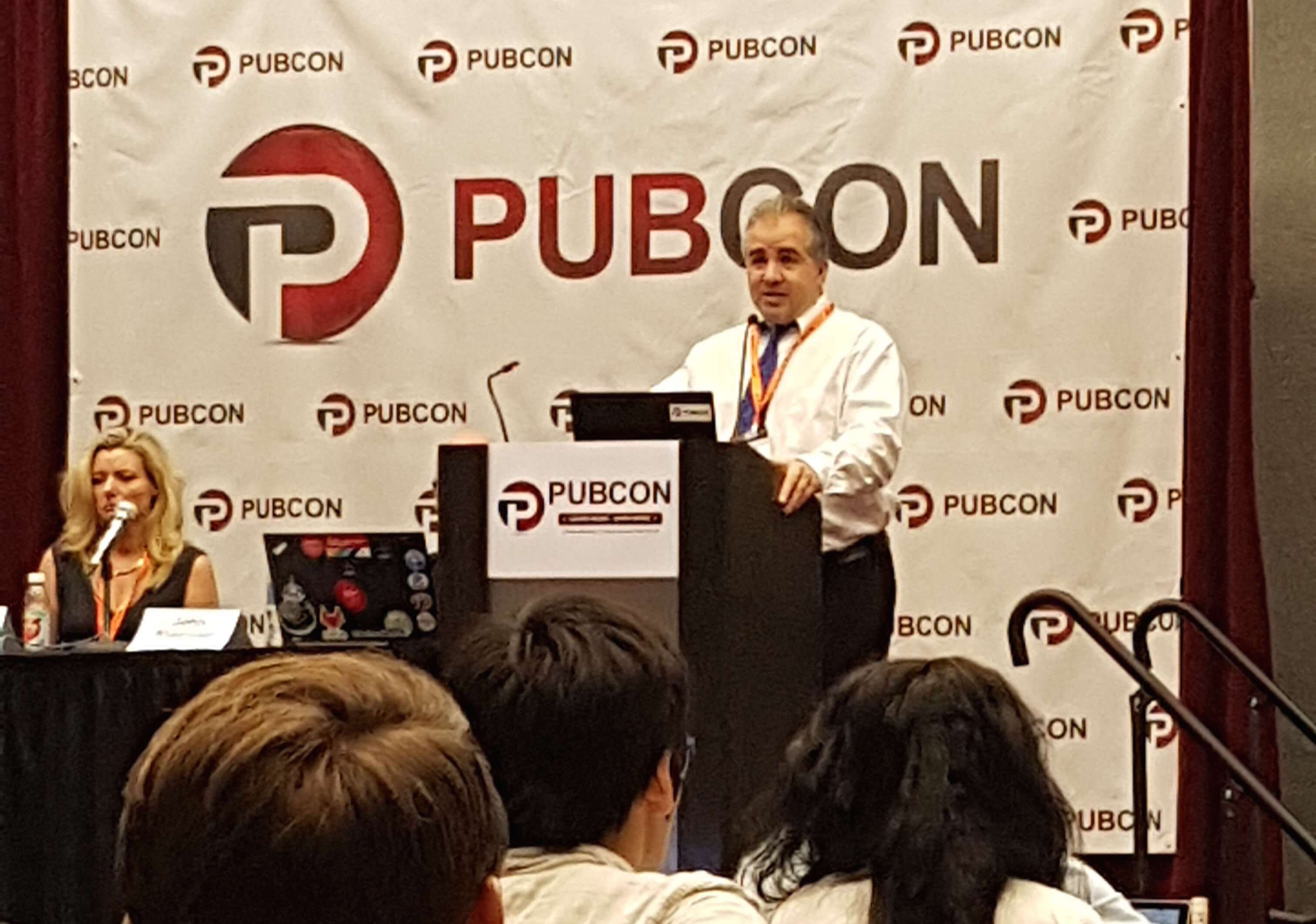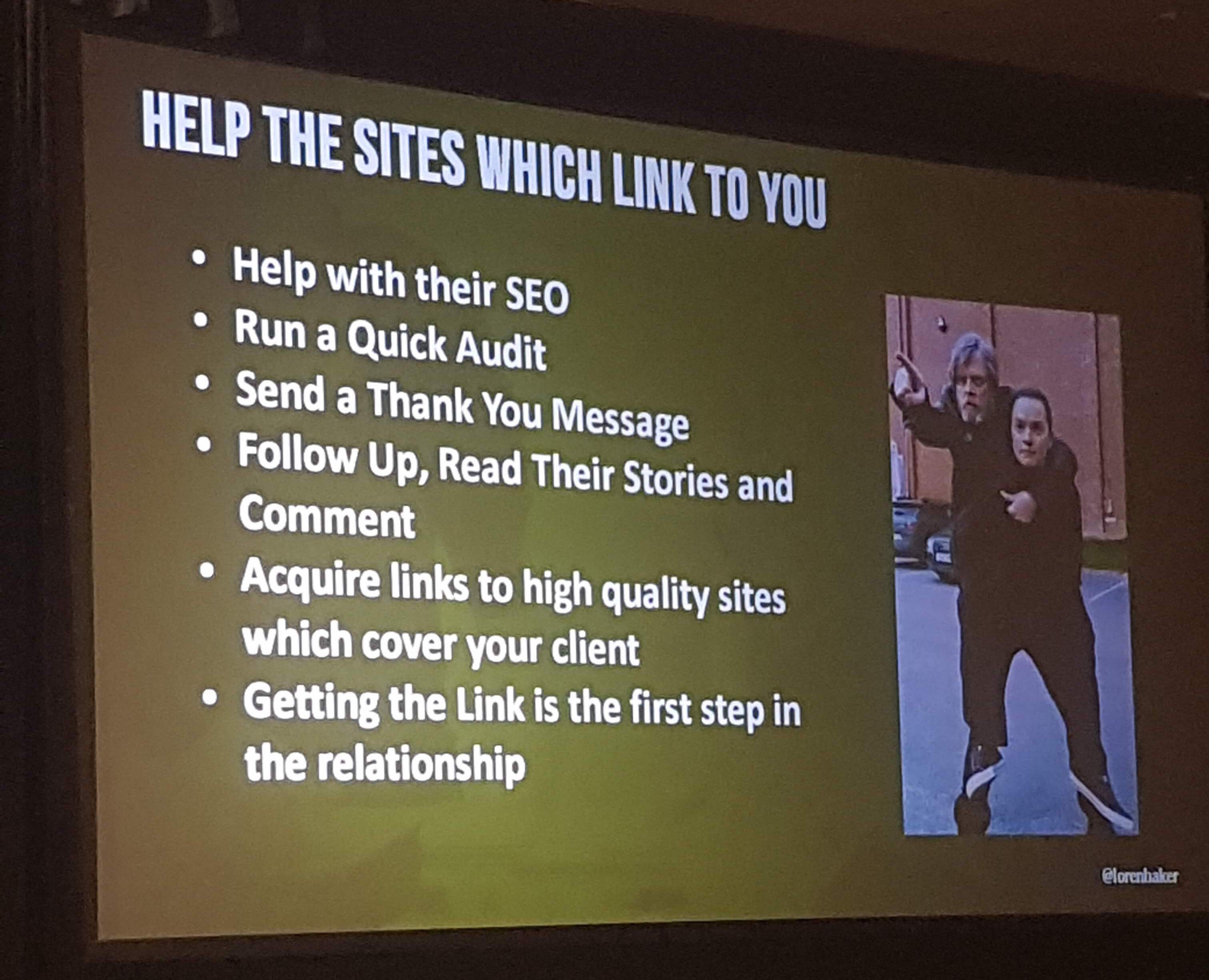Pubcon 2016 Las Vegas: Day 1 Recap
What is PubCon?
Pubcon, for those of you who still don’t know, is one of the premium digital marketing conferences today. It is held on a yearly basis in one of the most exciting locations (Las Vegas) and more than 15K marketers from all around the world attend.
This is a great conference to attend to and I’m excited to have the opportunity to report on what I’ve learned so far from the event. Overall, Pubcon holds some amazing insights for SEOs, PPCs, social media marketers, agencies, content marketers, and more. In addition to my coverage on the Outbrain blog, you can follow my live updates for the next two days on our Twitter channel @Outbrain as well as on my own personal Twitter @Rliraz.
Opening Keynote

My first day started with the keynote by Scott Stratten, UnMarketing.
Scott mainly talked about influencers on social media channels who share products that they’ve never tried before—but still get huge amounts of likes and shares!
But what is the point of these likes? Do they bring any value to the products? It might look good on social media but, in the end, it brings zero value to sales.
“It’s vanity metrics and we’re better than that!” said Scott.
Scott also talked about newsjacking. His advice: Do it well and do it properly. Recognize the opportunity and leverage this moment for your brand.
By the way, Scott is the co-author of the book Unmarketing. I was lucky to get my own signed copy from him! Thanks, Scott!
Just got my signed copy of @unmarketing book @Pubcon ! #pubcon! pic.twitter.com/0y2ik4TZ3M
— Liraz Postan (@Rliraz) October 11, 2016
Session 1: Tech Issues
I had a chance to listen in on what Barry Adams, Google AMP had to share about AMP, which stormed into our lives and it is now a huge part of the mobile experience, which Google loves. AMP is an alternative version of your mobile web pages which loads faster on mobile devices.
It has some key elements. It will render on most browsers, uses inline CSS, and holds inside structured infrastructure, caching/pre-rendering, and defeating ad blockers. (Read more about AMP on Google’s blog here.)
|
|
However, it’s far from being perfect and you need to be careful when using it, so you don’t lose major traffic volumes through AMP.
What works well with AMP:
- Analytics
- Ads (limited)
- Videos
- Gif+ WebP animated
- Carousels
- Basic forms
- Basic paywalls
- Iframes
- Sidebar
- Notifications
- Live updates
- a/b testing
What doesn’t work well (yet) with AMP:
- Full end-to-end eCommerce
- Most JS-Based interactivity
Conclusion:
If you’re using AMP, use it very carefully. Be sure to read all the guides you need in order not to create mistakes that will cost in traffic lost in the near future.
Part 2 of the same session included Michael Grey on tech issues on website. This half of the session was perhaps one of the most practical I’ve ever attended. He included step-by-steps and how to’s with straight-to-point explanations:

When looking at a website:
- Use Google and Bing search console
- Make sure to have a sitemap
- Perform a site crawl and be able to read it
- Compare data from Google and Bing webmaster console
- Use Google Analytics
Sitemaps:
- Most CMS and eCommerce packages come with a sitemap plugins module.
- Know which pages are/aren’t included
- Know which eCommerce pages are/aren’t included
- Know how often sitemaps are being crawled and ping search engines
- Make sure sitemaps are listed in robots.txt
- Submit sitemaps to webmaster search console
Crawling:
- Full crawl every 3-4 months and more often after fixing some major issues
- Website Auditor for lower budget owners, though less functionality
- Screaming Frog works for most sites less than 100k pages
- DeepCrawl is the most expensive and runs extremely well for large sites
Key takeaways:
- To HTTPS or no HTTPS? (That’s the question). There’s a risk of losing some of your tracking and referral stats and Google is giving a slight advantage to sites that move to secure SSL. Make sure to do it right.
- Structured data and rich cards- “Do it as others are really doing it. And if you’re not- you’re in trouble”, says Michael.
- Go over the HTML improvements on the search console
- H1’s: Use only one. It helps Google understand what the page is about. We know there are several influencers which indicate it is ok to use several H1’s, but Michael recommends having just one.
- Of course, use Google Pagespeed insights and Google Analytics. Use both to improve UX and make sure the page loads faster through various channels, devices, and browsers.
- Track conversion drops and to see what is it that you might be doing wrong.
Session 2: Link Building in 2016
First up, Dixon Jones from Majestic SEO spoke. He explained that before it was all about getting links from quality pages to my site. Now, however, the goal is to become an entity and get linked in our entity data sources.
But how do we find such link sources?
- Wikipedia
-Try not do it wrong
-Look at all the edits on competitor sites already listed
-Use an expert and start learning it
- W3c has a list of data sources and Linkeddata.org may be interesting as well
- Schema for link sources: Once you are an entity develop the schema. Complete the graph for Google and take a big breath, as this process isn’t fast. Some schema works quicker than others. Be patient. When it does goes well and is picked up by Google, it now knows who you are.
Takeaways:
- Get to Wikipedia
- Expand using wikidata
- Develop using schema
- Find other entity Data sources used by Google
- Get links from those sources (if you can’t become a source)
Next, Loren Baker from SEJ spoke.

He explained that highly targeted traffic to a landing page/content can help you rank well on SERPs. He recommended using content amplification platforms and targeted PPC campaigns to your content pages.
Use data:
- Google (auto-complete) for long tails and related search terms. Simply search for it. You will want to rank for all of these terms.
- Answerthepublic.com: Use it to find out how people actually search. This is a really useful tool. Export all this data and start your research.
- SEMrush.com: What is your ranking on organic results? Get the SEO proof for your efforts. Tracking backlinks gives you a proven list of bloggers/influencers that actually cover content. Reach out. Educate them with your content. Try and reach smaller bloggers to pitch and build relationships with them. Help the sites that link to you.

Other big tips included investing in passionate writers and designers. Always make your content funny and interesting.
Additionally, develop the content that people WANT: ebooks, blog posts, infographics, infograms, and videos. This is the type of content you can promote…
Also, see what type of content is already out there and what’s being picked up.
And don’t forget to work together with PR on campaigns.
Focus on becoming the source by using proprietary data. Try Google Consumers surveys. Try your own data. This should go viral among anyone who needs this data from you.
Syndicate your content through DesignTAXI, Infographic Journal, Imgur, or Slideshare. Explore all options.
Session 3: Content Management for International Markets
First up, creating and classifying culture content with Michael Bonfils.
What happens when you want to take best practices from the US and use it for other markets?
60% of global market companies do not have a multilingual content marketing strategy.
Michael advised us to start learning cultures rather than languages when it comes to international marketing.
The priority is to get your SEO+PPC linguist and your translators to work together to find the best balance between translations and localization. Whether it is broken compounds or linguistic dialects, slang/free way of speech, or mistyping and miss-spellings—all of these must be part of your keyword research list and data.
How to find global content opportunities:
- You can start by creating personas (using xtensio.com, for example) and start analyzing motives and the customer journey path. You need to repeat this step for every market.
- Identify your competitor’s top links and related content (you can use Linkdex.com for it, for example). Are they doing infographics or other content types that work best for them?
- Review Q&A sites and forums. Get ideas on what people are not getting the right answers for in search engines.

Point of thought:
Ask yourself if you find the below video funny. You may find it interesting that some cultures will laugh at it, and others will find it a bit disturbing.
https://www.youtube.com/watch?v=wGZpWOMGJCM
More slides from 1st day:
- How SEOs can use PPC to hit their goals
- Social Customer Service
- Technical SEO Myths Facts And Theories On Crawl budget
- Site Speed
- The International Content Marketing Success Kit
Stay tuned for more updates and slides!
Please leave comments below with any questions or live requests and feel free to reach out to me via Twitter @Rliraz.



